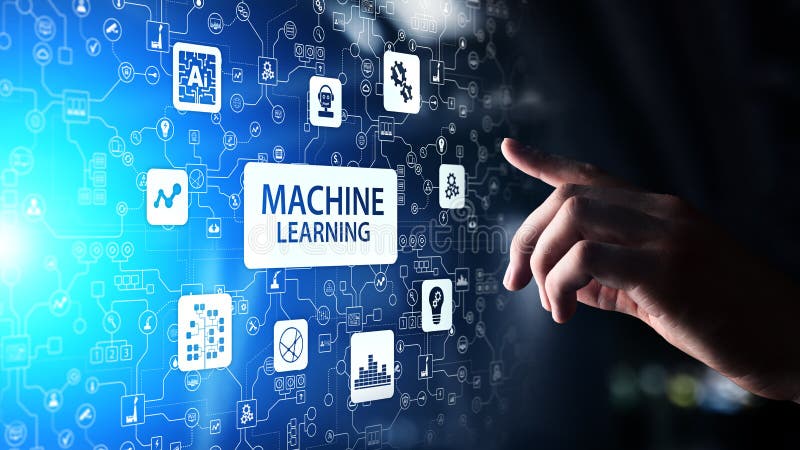Unsupervised Learning
Unsupervised learning stands as a cornerstone in the realm of artificial intelligence, where algorithms learn patterns and structures from unlabeled data without explicit guidance. Among the myriad of techniques, deep learning has emerged as a potent force, revolutionizing the landscape of unsupervised learning.
Understanding Unsupervised Learning:
Unsupervised learning entails the process of extracting meaningful insights and structures from raw, unlabeled data. Unlike supervised learning, where the algorithm is trained on labeled examples, unsupervised learning algorithms must discern inherent patterns and relationships within the data autonomously. This autonomy renders unsupervised learning pivotal in scenarios where labeled data is scarce or expensive to obtain.
The Role of Deep Learning:
Deep learning, a subset of machine learning inspired by the structure and function of the human brain, has garnered immense attention owing to its ability to automatically discover intricate patterns in vast and complex datasets. Characterized by multilayered neural networks, deep learning models excel at capturing hierarchical representations of data, making them inherently suitable for unsupervised learning tasks.
Applications of Deep Learning in Unsupervised Learning:
- Dimensionality Reduction: Techniques such as Autoencoders and Variational Autoencoders (VAEs) leverage deep learning to compress high-dimensional data into a lower-dimensional latent space while preserving essential features. These compressed representations facilitate efficient data visualization, exploration, and downstream analysis.
- Clustering: Deep clustering algorithms like Deep Embedded Clustering (DEC) and Deep Adaptive Image Clustering (DAIC) leverage neural networks to discover latent clusters within unlabeled data. By iteratively updating cluster assignments and network parameters, these models autonomously learn meaningful representations, fostering accurate and scalable clustering.
- Generative Modeling: Generative Adversarial Networks (GANs) and Variational Autoencoders (VAEs) exemplify deep learning’s prowess in generative modeling. GANs pit a generator network against a discriminator network in a game-theoretic framework, culminating in the synthesis of realistic data samples. VAEs, on the other hand, learn to generate data by approximating the underlying probability distribution of the input data, enabling diverse and high-quality sample generation.
- Anomaly Detection: Deep learning architectures such as Recurrent Neural Networks (RNNs) and Autoencoders excel at detecting anomalies within unlabeled data. By learning the inherent structure of normal data distributions, these models can flag deviations indicative of anomalous instances, thereby bolstering fraud detection, fault diagnosis, and cybersecurity.

Challenges and Considerations:
While deep learning holds tremendous promise for unsupervised learning, several challenges warrant consideration:
- Data Efficiency: Deep learning models often require large volumes of data to learn meaningful representations effectively. In scenarios with limited unlabeled data, unsupervised learning may struggle to generalize and capture underlying structures accurately.
- Interpretability: The inherent complexity of deep learning models may impede interpretability, hindering insights into the learned representations and decision-making processes. Addressing this challenge necessitates the development of transparent and interpretable architectures tailored for unsupervised learning tasks.
- Computational Resources: Training deep learning models, particularly those with numerous layers and parameters, demands substantial computational resources. Scaling unsupervised learning algorithms to handle vast datasets while mitigating computational costs remains an ongoing area of research and development.
- Evaluation Metrics: Assessing the performance of unsupervised learning algorithms poses a unique set of challenges, as traditional metrics such as accuracy and precision are not directly applicable in the absence of ground truth labels. Establishing robust evaluation metrics tailored to specific unsupervised learning objectives is imperative for meaningful performance assessment.

In the ever-evolving landscape of artificial intelligence, deep learning stands as a formidable ally in unraveling the mysteries embedded within vast troves of unlabeled data. From uncovering latent structures to generating synthetic samples, deep learning fuels the advancement of unsupervised learning across diverse domains. However, overcoming challenges such as data scarcity, interpretability, and computational complexity remains paramount to fully harnessing the potential of deep learning in unsupervised learning. Through continued research, innovation, and interdisciplinary collaboration, we can unlock new frontiers and usher in a future where unsupervised learning transcends boundaries, enriching our understanding of the underlying fabric of the world around us.
